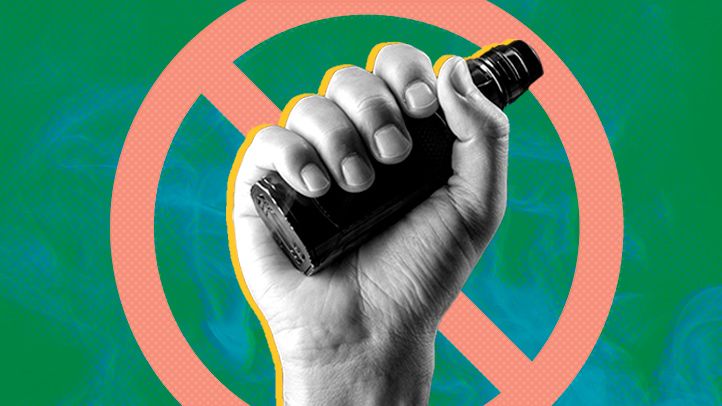Quitting vaping can be difficult, especially if you’ve gotten used to nicotine’s grip. Although vaping is often seen as a safer alternative to smoking, it can quickly turn into a habit that is hard to eliminate. Understanding the challenges of quitting, the obstacles you might face, and the best ways to succeed is key for breaking free from vaping. This guide will walk you through the best methods to quit vape addiction, how to handle challenges, and the tools needed for a smooth recovery.
Why Quitting Vaping Is Hard
Vaping introduces nicotine into your body, which leads to addiction. Many people who try to quit experience vape withdrawal symptoms like irritability, anxiety, strong cravings, and trouble concentrating. Vaping also creates psychological habits—many people associate it with socialising, relaxation, or stress relief, making it even more difficult to quit.
Understanding these challenges is the first step to overcoming them. Cravings are temporary, and learning how to address them can make quitting much easier. It’s important to approach the process with realistic expectations and understand that it may take patience and time.
To illustrate, think of nicotine addiction as a daily habit loop: the trigger (feeling stressed or bored), the action (reaching for the vape), and the reward (temporary relaxation or focus). Recognising this cyclical process helps you plan for each stage and disrupt the pattern effectively.
Effective Ways to Quit Vaping
To quit vaping successfully, it’s important to use methods that address both the physical and mental aspects of addiction.
1. Gradual Reduction
Gradually reducing your nicotine intake allows your body to adjust slowly, minimizing withdrawal symptoms. For example, you can reduce the nicotine strength of your e-liquid or decrease the number of times you vape each day. Some people find it helpful to set a schedule, such as reducing by one vape session each week. A practical example of this is cutting down from 10 vaping sessions a day to 8 the following week. Then continue that pattern until you are smoke-free.
2. Nicotine Replacement Therapy (NRT)
NRT includes products like nicotine patches, gum, or lozenges that provide small, controlled amounts of nicotine to ease cravings. These options can be found over-the-counter and help reduce withdrawal symptoms while you focus on breaking the habit of vaping. A study written by the CDC found that people using NRT are 50% more likely to quit successfully than those who try without assistance.
3. Cold Turkey
Some people choose to quit all at once, cutting off nicotine completely. This method can be difficult due to stronger withdrawal symptoms, but many have succeeded with strong willpower and a solid support system. Having methods in place, such as keeping your hands busy and avoiding triggers, can increase your chances of success. For instance, replacing the habit with chewing gum or squeezing a stress ball during cravings can make the process smoother.
4. Healthy Distractions
Finding new activities to occupy your time and mind can be very helpful. Exercise, hobbies, or mindfulness practices like meditation can shift your focus away from vaping. For example, many people find that going for a quick walk or engaging in a hands-on hobby helps curb the desire to vape. Some even find new hobbies like running, painting, or cooking as a replacement for their old habit.
Build a Support System and Handle Cravings
Quitting is easier when you have support. Share your goals with friends, family, or support groups so they can assist you along the way. They can help keep you accountable and offer motivation when things get tough. For instance, joining online forums or local support groups will allow you to share your journey and learn from others facing a similar challenge.
Managing cravings is key to quitting. Try deep breathing, chewing gum, or staying busy with activities to take your mind off the urge. Remember, cravings normally only last minutes, and resisting them gets easier with time. For example, if you experience a craving, try drinking a glass of water or going for a short walk—physical activity can disrupt the urge. Techniques like the “5-Minute Rule,” where you delay your reaction for just five minutes, often help the craving pass.
Common Questions About Quitting Vaping
Can I quit vaping cold turkey?
Yes, many people quit cold turkey successfully. However, it can be challenging because withdrawal symptoms are more severe. Preparing for cravings and having strategies to cope, like exercise and hydration, can help.
Why is it so hard to quit vaping?
Vaping is hard to quit because it contains nicotine, which is highly addictive. Nicotine triggers dopamine release in your brain, creating feelings of pleasure. Over time, your body craves that feeling, making it difficult to stop.
Is vaping less harmful than smoking, and does that make it easier to quit?
Vaping is generally considered less harmful than smoking yet vaping still delivers nicotine. This keeps the addiction going, which can make quitting just as hard. Some people find it challenging because they underestimate the health risks of vaping.
How does quitting vaping improve health?
When you stop vaping, your lungs start to heal, and breathing becomes much easier. Your blood pressure and heart rate also improve, reducing your risk of heart issues. As time passes, your risk of lung disease drops, and your sense of taste and smell get stronger. For example, many ex-vapers report sharper senses and more energy within weeks of quitting.
Summary and Moving Forward
Quitting vaping is challenging but entirely possible with the right approach and support. Key steps include understanding nicotine addiction, using proven quitting methods to stop vape addiction, and building a support network. Many people find that seeking help from luxury rehabs can provide the specialised care and environment needed to overcome addiction. Quitting has significant health benefits, from improved lung function to a stronger immune system. Stay committed, be patient with yourself, and remember that every day without vaping is a step toward a happier and healthier life.
As you move further away from vaping, you reclaim control over your health and well-being. Take it one step at a time and celebrate your progress, no matter how small. The journey is worth it.



































